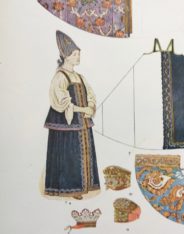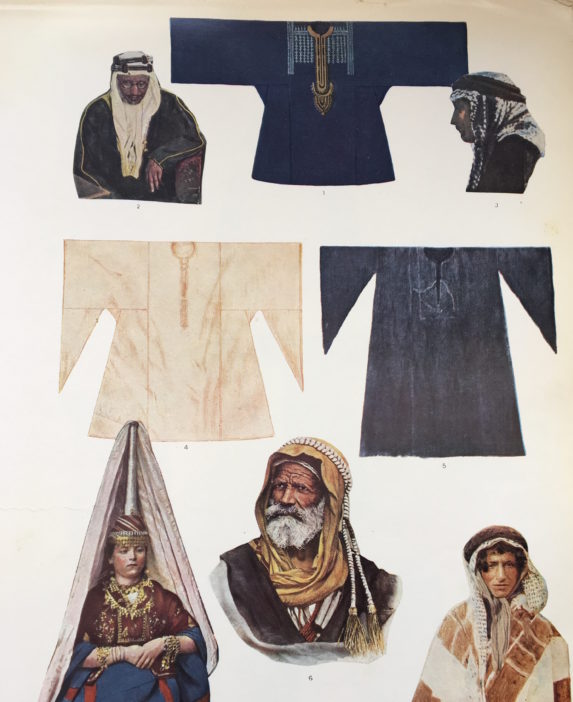What kind of clothing did Liane Chu make at the Red Square Dress Shop? Reflecting on this question herself, Liane painted a vivid picture of a great hodgepodge of international prints and inspiration sources. The above image is a page from her weathered copy of Costume Designs and Patterns, a 1967 book that inspired many of her silhouettes and gold braid-trimmed garments.
“We used ethnic materials,” Chu recalled. “I remember we used to buy a lot of Indonesian Batik from some place in Chinatown, I believe it was. And East Indian material. We used silks and mirror cloth and Mexican fabric—not the printed Guatemalan fabric that we were used to, but a plain weave Mexican fabric called Manta…We used a lot of that. Monk’s cloth…plain weave, kind of used for curtains primarily, I think, but I made a lot of shirts and dresses out of that and it was sort of an ethnic look that was catching on at the time.”
Above is a page from Costume Designs and Patterns that she drew from while designing for Red Square. She used this Bedouin-style tunic as inspiration to create men’s blouses and remembers a particularly fashionable friend of hers named Jeff turning heads on Berkeley’s campus in a full “Bedouin Dress” ensemble, much like the one illustrated above, supplemented by heavy brown work boots. Since Madras shirts, or plaid short sleeve button-downs, were the unspoken uniform of the more straight-laced fraternity brothers at Cal, as Liane remembers, this style of clothing—with its strong Eastern European and Middle Eastern influences—was a way to set oneself apart from the mainstream.

This image demonstrates what Liane referred to as gold trim detailing. She identified this as a distinctly Eastern European style, one that became a common way to decorate dresses and blouses. The gold braid decorating the apron and skirt was a trend that both Jeanne Rose and Liane identified as popular at the time. Liane often made embellished aprons or overgarments out of heavy upholstery or velvet to be worn with a simple white underdress. These garments would be decorated with woven ribbon or trim.
